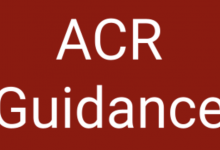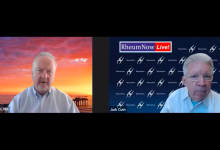Five Barriers to Biosimilar Adoption in the US Save

A recent Deloitte analysis of the biosimilar market in the USA suggests there are defined obstacles to biosimilar use that must be dealt with, especially as the current administration is seeking to lower drug prices and reduce out-of-pocket costs for US consumers.
A 2017 analysis from Rand Corporation estimates that biosimilars in the US could trim direct spending on biologic drugs by $54 billion by 2026 (about 3 percent of total estimated biologic spending over the same period).
As part of the recently passed federal budget, biosimilar manufacturers can now participate in Medicare Part D’s Coverage Gap Discount Program. The discounts do not change the out-of-pocket share consumers pay, but they do reduce the total cost of the drugs paid by the Part D prescription drug plans.
Biosimilars have been used for nearly 10 years in Europe where they have been readily adopted. In France, the expectation is that over 70% of patients will be prescribed a biosimilar over a biologic.
The authors propose five challenges that could be keeping biosimilar manufacturers from gaining more traction in the US market:
- Pricing: While generic drugs may cost 70 percent less than a branded drug, biosimilar manufacturers have been unable to offer prices that are that much lower than the originator biologic. Thus far, the discounts have not been enough to significantly shift demand away from the branded biosimilar. The entry of multiple biosimilars for the same reference product could lead to steeper discounts (and potentially a price war).
- Sales and marketing: Generic manufacturers dont need a sales force to call on physicians, yet they will be necessary and costly to grow biosimilar use, especially with physician reluctance. As physicians become more comfortable with biosimilars, manufacturers that are slower to market could wind up being more profitable than the early movers that invested in sales and physician education.
- Physician acceptance: European physicians tend to be more comfortable prescribing biosimilars than US physicians. This is partly because biosimilars have been available in Europe far longer, physicians there are more familiar and the discounts are sizeable and benefit the cost of healthcare locally. The question is when will health plans or health systems mandate biosimilars and will they do so at the expense of profits garnered in a rebate driven system for brand biologics. The Food and Drug Administration (FDA) has launched a website, with featured developed educational videos, to give physicians a better understanding of biosimilars as a cost-saving option and to learn more about the approval process for the drugs.
- Legal issues: Lawsuits filed by biologic originators against biosimilar manufacturers might also be impeding the growth of biosimilars in the US. Not only can litigation delay the launch of new biosimilars, it also could keep US prices higher compared to those in Europe. Patent litigations against biosimilar manufacturers continue to play a key role in manufacturer defense strategies. Some biologic manufacturers are facing scrutiny over perceived anti-competitive practices aimed at preventing uptake of biosimilars.
- Regulatory barriers: Biosimilar substitution guidelines are evolving to favor biosimilar access across markets. A growing number of states have enacted laws that allow a pharmacist to substitute a biosimilar for a prescribed biologic therapy if the biosimilar has been approved by the Food and Drug Administration (FDA) as being interchangeable. So far, FDA hasn’t approved any biosimilar for interchangeability.
Biosimilars in the US have a long way to go to catch up to Europe. This opportunity may incease as more patents expire for biologic drugs. Nonetheless, biosimilar manufacturers need to develop strategies to break through the biosimilar barriers that exist in the US market.










If you are a health practitioner, you may Login/Register to comment.
Due to the nature of these comment forums, only health practitioners are allowed to comment at this time.